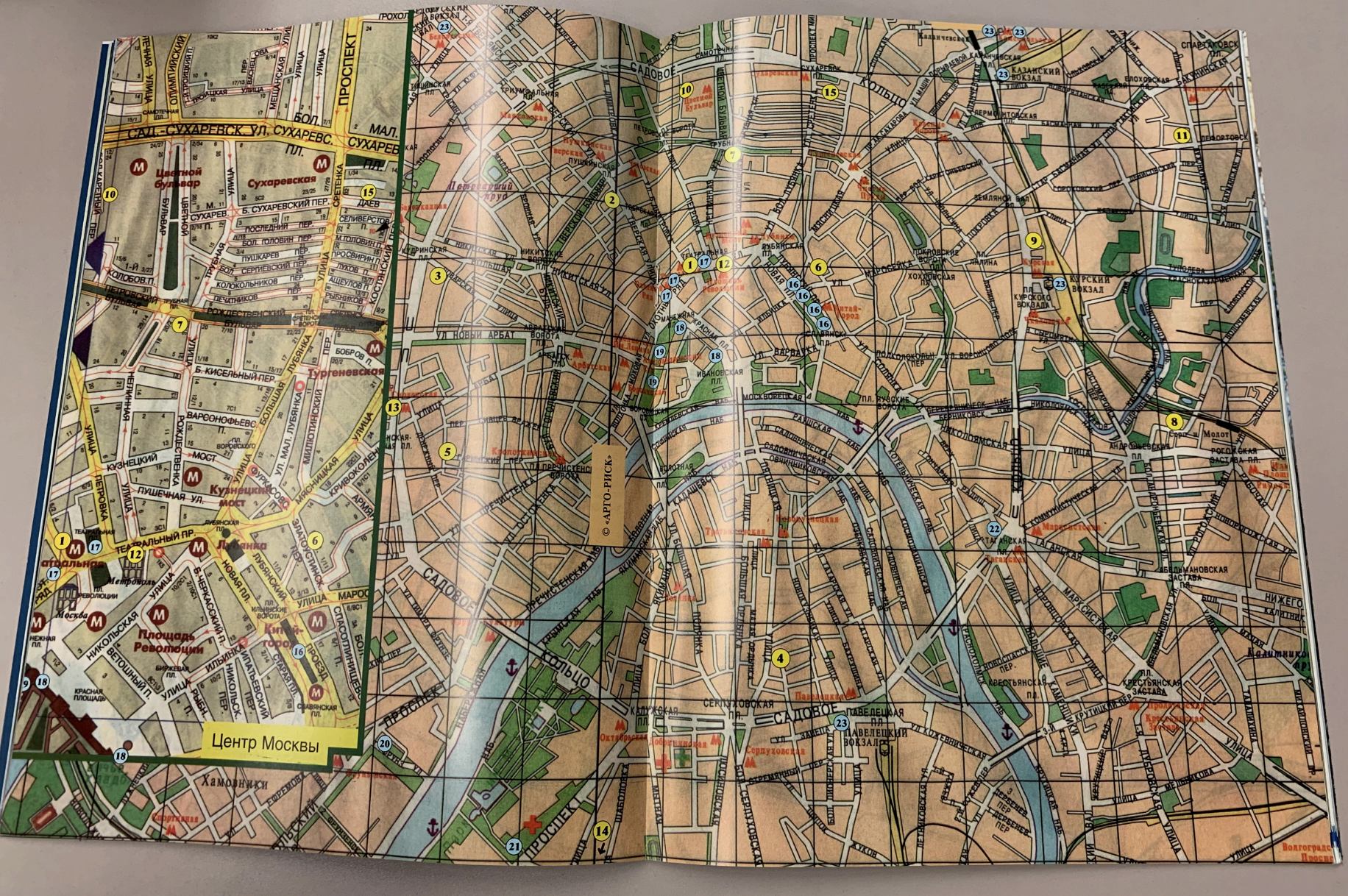Filed Under: Print > Entertainment > Places of Interest for Gays in Moscow
Places of Interest for Gays in Moscow
[2 items]
Argo, which began publishing in 1993—the year Article 121 of the Russian Federation Criminal Code, which prohibited “sodomy” or male homosexual relations, was repealed—was a glossy magazine targeting gay men. This type of magazine had been common in Western cities beginning in the 1980s and typically featured articles about health and other practical information (many on HIV and AIDS), erotic fiction, and personal ads, all interspersed with photographic erotica—generally male nudes.
The map and accompanying list featured in this artifact would have been familiar to Russian readers of the new LGBTQ press of the 1980s and 1990s. In most cities, establishments accommodating sexual encounters, such as bathhouses, had to be discreet and were thus difficult to find without direction. The less formal, more improvised venues for sexual encounters— “cruising spots” or pleshki, the last rubric on the list, highlighted in teal—were completely underground for legal and safety reasons. The secrecy surrounding “cruising spots” like New York City’s Christopher Street and West Village; San Francisco’s Castro; and the Marais in Paris persisted even in Western cities with well-established and visible LGBTQ populations.
In cities like Moscow, where LGBTQ people remained vulnerable to violence even after the repeal of Article 121, restaurants, cafes, bars, and night clubs had to maintain a low profile—to protect both the privacy of their patrons and the establishments themselves. To reach their target audience without attracting unwanted attention, LGBTQ-specific businesses had to get creative. Hidden or discreet as many locales were, addresses or basic x/y coordinates were not enough to orient a prospective visitor. As a result, publications printed minute instructions of the type seen here, which direct clients to a restaurant called “Scorpion” and a beach at “Lebiazh’i lakes”: “Enter through the second arch of building no. 4 and immediately on the left you’ll see a black iron door”; “second stop on the trolley—at the bridge across the Moscow river to the Strogino neighborhood, walk to the middle of the bridge, then go down the staircase and walk southward for 30 minutes, keeping to the right, almost to the end of the peninsula.” Beyond geographic directions, the instructions are careful to note sources of potential danger. All the beaches and pleshki, along with some night clubs, like Shans, are marked as “potentially dangerous places.” These kinds of maps were essential to LGBTQ people trying to navigate the urban landscape as safely as possible.

